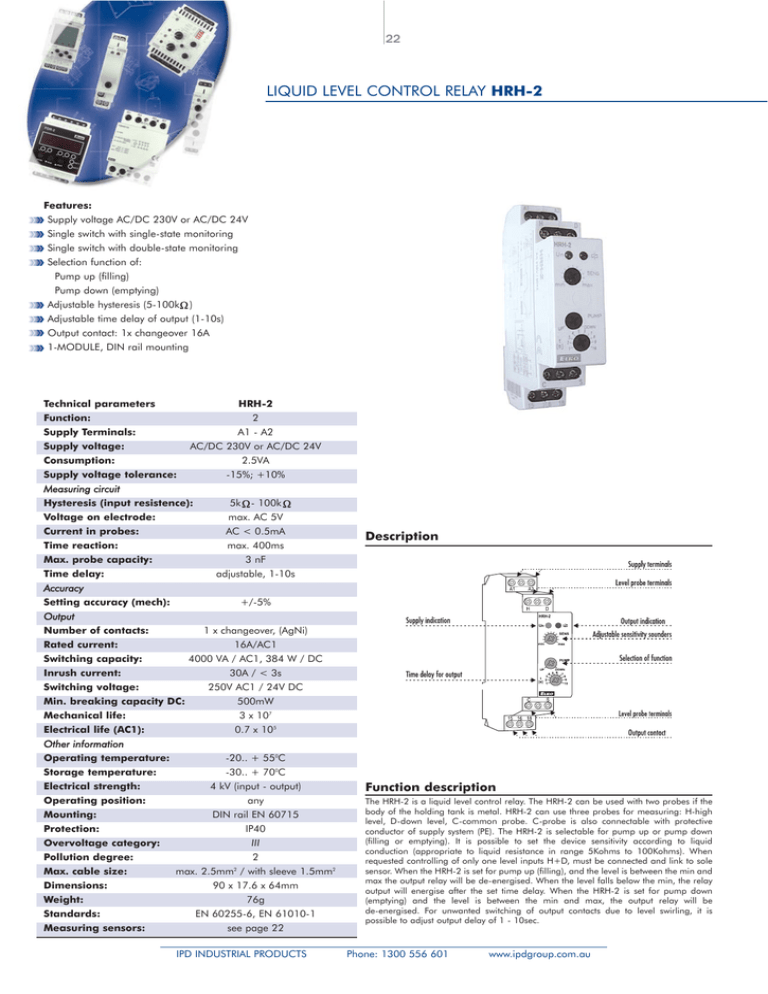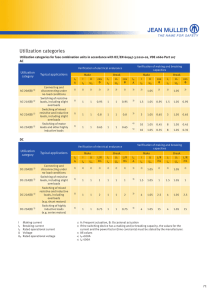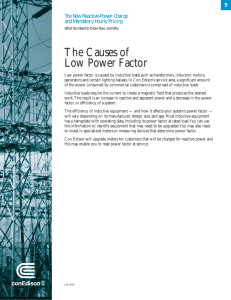LIQUID LEVEL CONTROL RELAY HRH-2
advertisement

22 LIQUID LEVEL CONTROL RELAY HRH-2 Features: »» »» Supply voltage AC/DC 230V or AC/DC 24V »» »» Single switch with single-state monitoring »» »» Single switch with double-state monitoring »» »» Selection function of: Pump up (filling) Pump down (emptying) »» »» Adjustable hysteresis (5-100k ) »» »» Adjustable time delay of output (1-10s) »» »» Output contact: 1x changeover 16A »» »» 1-MODULE, DIN rail mounting Technical parameters Function: Supply Terminals: Supply voltage: Consumption: Supply voltage tolerance: Measuring circuit HRH-2 2 A1 - A2 AC/DC 230V or AC/DC 24V 2.5VA -15%; +10% Hysteresis (input resistence): Voltage on electrode: Current in probes: Time reaction: Max. probe capacity: Time delay: Accuracy Setting accuracy (mech): Output 5k - 100k max. AC 5V AC < 0.5mA max. 400ms 3 nF adjustable, 1-10s Description +/-5% Number of contacts: 1 x changeover, (AgNi) Rated current: 16A/AC1 Switching capacity: 4000 VA / AC1, 384 W / DC Inrush current: 30A / < 3s Switching voltage: 250V AC1 / 24V DC Min. breaking capacity DC: 500mW Mechanical life: 3 x 107 Electrical life (AC1): 0.7 x 105 Other information Operating temperature: -20.. + 550C Storage temperature: -30.. + 700C Electrical strength: 4 kV (input - output) Operating position: any Mounting: DIN rail EN 60715 Protection: IP40 Overvoltage category: III Pollution degree: 2 Max. cable size: max. 2.5mm2 / with sleeve 1.5mm2 Dimensions: 90 x 17.6 x 64mm Weight: 76g Standards: EN 60255-6, EN 61010-1 Measuring sensors: see page 22 IPD INDUSTRIAL PRODUCTS Function description The HRH-2 is a liquid level control relay. The HRH-2 can be used with two probes if the body of the holding tank is metal. HRH-2 can use three probes for measuring: H-high level, D-down level, C-common probe. C-probe is also connectable with protective conductor of supply system (PE). The HRH-2 is selectable for pump up or pump down (filling or emptying). It is possible to set the device sensitivity according to liquid conduction (appropriate to liquid resistance in range 5Kohms to 100Kohms). When requested controlling of only one level inputs H+D, must be connected and link to sole sensor. When the HRH-2 is set for pump up (filling), and the level is between the min and max the output relay will be de-energised. When the level falls below the min, the relay output will energise after the set time delay. When the HRH-2 is set for pump down (emptying) and the level is between the min and max, the output relay will be de-energised. For unwanted switching of output contacts due to level swirling, it is possible to adjust output delay of 1 - 10sec. Phone: 1300 556 601 www.ipdgroup.com.au 23 LIQUID LEVEL CONTROL RELAY HRH-2 Functions Connection LIQUID LEVEL CONTROL SENSORS SHR Features: »» »» Sensor to control flooding »» »» Electrode with diameter 4mm is placed in plastic cover with 12mm screw with nut »» »» Panel or to holder mounting »» »» Conductor is connected to terminal board, shrink bushing for feeder place insulation is a part of device »» »» Maximum wire profile: 2.5mm »» »» Installation: after connecting a wire to the sensor, run the shrink 2 SHR-1 bushing over the wire onto the sensor. Heat the sendor and by shrinking the connection of sensor and wire will be hermetical »» »» Weight: 9.7g »» »» Operating temperature: -25… + 600C »» »» Total sensor length: 65.5mm Features: »» »» Detection sensor is electrode, which in connection with suitable device is used for level detection for example in wells, tanks,.. »» »» To be used in electric conductive fluids and mechanically polluted fluids SHR-2 with temperature: +1… + 800C »» »» Stainless steel one-pole electrode reside in PVC cover, intended for tank wall mounting or mounting by socket. »» »» To ensure correct function of the sensor, it is necessary to have the electrode without dirt which could disable the connection of the electrode and fluid and thus lead to malfunction. »» »» Max. wire profile: 2.5mm2 »» »» Installation; - Conductor wire is connected by freezing of two brass screws to stainless steel electrode »» »» Weight: 48.6g, dimensions: max diameter 21mm, length 96mm Features: »» »» Stainless steel sensor is used to severe and industrial surroundings, wall or cover tank mounting »» »» Sensor has connecting wire - length 3m, which is connected to sensor to scan electrode and sensor bushing »» »» Connecting wire is double-wire PVC 2 x 0.75mm , connection of wires: 2 brown - scan electrode, blue - sensor bushing »» »» Connection M18 x 1.5 screw »» »» Protection degree IP67, Sensor weight without cable: 100g »» »» Operating surroundings: place without the danger of detonation, SHR-3 IPD INDUSTRIAL PRODUCTS temperature on screw: max. 950C, pressure immunity: on 250C 4 MPa, on 950C 1.5 MPa »» »» Weight: 239g »» »» Material: bushing and seam electrode: stainless steel W.Nr. 1.4301, insulation insert of electrode: PTFE, internal material: self-extinguishing epoxies resin Phone: 1300 556 601 www.ipdgroup.com.au 28 UTILIZATION CATEGORIES Utilization category AC-1 Typical application AC-5a AC-5b AC-6a AC-6b AC-7a AC-7b AC-15 AC-20 AC-21 AC-22 AC-23 Non-inductive or slightly inductive loads, resistive furnaces. Example: resistive furnaces Slip-ring motors: starting, plugging and reversing. Example: squirel-cage motors,lifts,elevators,compressors,pumps,air-conditioning Squirrel-cage motors: starting, disconnecting while running Squirrel -cage motors: starting, plugging, reversing, jogging. Example: lifts,elevators,compressors,pumps,air-conditioning,motar mixers. Switching of electric discharge lamps Switching of incandescent lamps Switching of power transformers Switching capacitor banks Small inductive loads in domestic appliances and similar applications Motor loads for domestic appliances Control of electromagnetic loads (>72 VA) Connecting and disconnecting under no-load conditions Switching of resistive loads including moderate overloads Switching of mixed resistive and inductive loads, including moderate overloads Switching of motors or other highly inductive loads DC-1 DC-3 DC-5 DC-6 DC-13 DC-20 DC-21 DC-23 Non-inductive or slightly inductive loads, resistance furnaces Shunt-wound motors:plugging,reversing,jogging,dymanic braking Series-wound motors: starting,plugging,reversing,jogging,dynamic braking Switching of incandescent lamps Control of electromagnets Connecting and disconnecting under no-load conditions Switching of resistive loads including moderate overloads Switching of highly inductive loads (e.g. series-wound motors) AC-2 AC-3 AC-4 Note: AC-11 is changed to AC-15 and DC-11 to DC-13 respectively Basic materials types, which are used for contact production of power relays are: a) AgCd - for resistive loads (because of Cd malignity is this contact on recess. b) AgNi - for resistive loads, good switches and transfers (no oxidisation) low currents/voltages, is not for peak currents and loads with inductive factors. c) AgSn or AgSnO2 - for switching the loads with inductive part, not good for low currents/voltages, has better immunity for peak currents, good for switching DC, not so good for switching the resistive loads. d) Wf (tungsten) - special contact for switching peak currents with inductive loads. e) gold alloy (AgNi/Au) - for the ‘better’ contact for low currents/voltages, antioxidant. IPD INDUSTRIAL PRODUCTS Phone: 1300 556 601 www.ipdgroup.com.au 31 DIMENSIONS IPD INDUSTRIAL PRODUCTS Phone: 1300 556 601 www.ipdgroup.com.au

